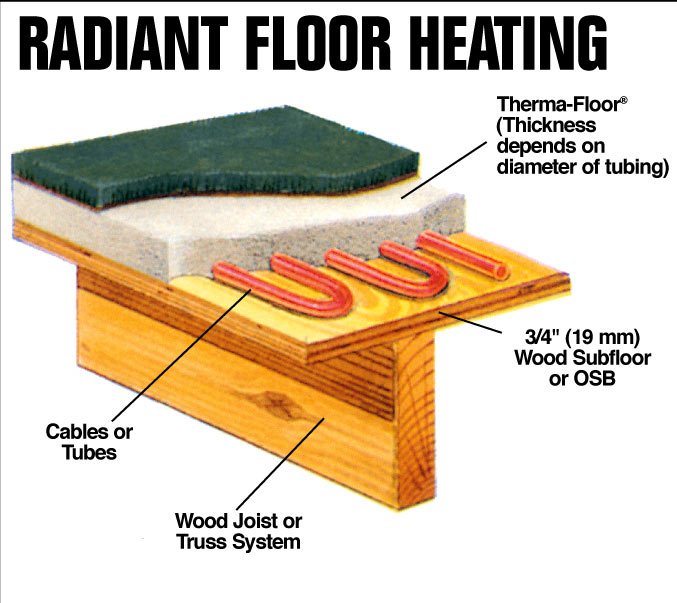A study of two identical canadian test houses showed an 11 degree setback overnight and during work hours generated a 13 percent savings in gas and a 2 percent savings in electricity.
In floor heat more efficient setback.
As with wood higher heat settings counteract the insulative nature of carpet but at a higher energy cost.
The extension floor was built to the same method leaving 70 80mm for screed.
A combi boiler is the best way to go to have hot water for domestic use and an energy efficient heater for the hydronic system.
Traditional radiators need to be heated to a high temperature between 149 167 degrees fahrenheit 65 75 degrees celsius in order to heat up a room effectively whereas floor heating only needs to run at a temperature of 84 degrees fahrenheit 29 degrees celsius or less depending on the floor finish in order to warm the room thereby consuming less energy and keeping your energy bills far lower.
As in am i spending more money trying to heat the carpeted areas of the house vs the tile.
If the circuit can handle the 5 10 amp load from the floor heat along with the load from the baseboard heaters then it will work.
Does it cost more to operate radiant heat flooring covered by carpeting than by tile.
At the last minute we decided we would like underfloor heating the plumber says that we will not have any issues as the sub floor is insulated just not in the ideal manner but i m worried the sub floor will draw too much heat out before the screed warms up.
This is a red herring.
Carpet acts as an insulator which prevents heat from radiating into the space.
The house loses less heat with a smaller δt.
A 100 sf cable at 120v will draw 10 amps but at 240v would only draw 5 amps.
With radiant floor heating you only need the water set to around 85 f to get your house to a toasty temperature that lasts a long time.
Carpeting impact on radiant heat floor systems question.
Thermostats measure the temperature of the room that they are placed in via an air sensor and or a floor sensor.
In other words on a cold night the thermostat will sense the lower temp and turn the floor heating up sooner.
In both cases the heat is run by setback programmable thermostats with floor sensors.
These readings are key when programming setback temperatures and assist in running an efficient heating system so if a thermostat is installed in a very cold or overly warm room it may not accurately reflect the true temperature of your home.
The bigger elephant in the room is the incredibly broken assumption that heat replacement always comes at the save efficiency.
Drop it more slowly and it makes the final number closer to no setback but the conslusion is the same.




























